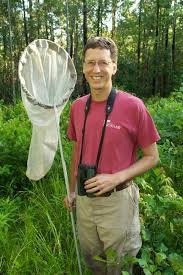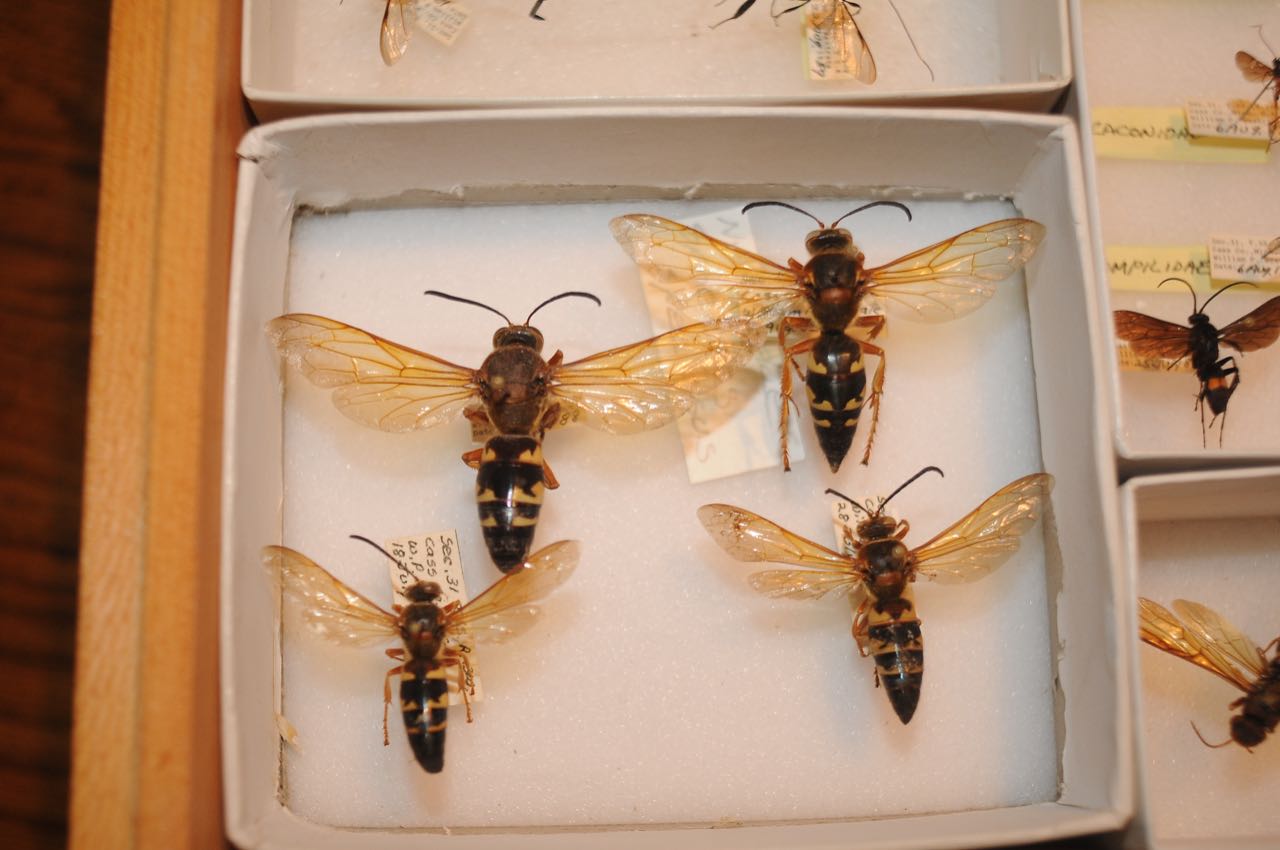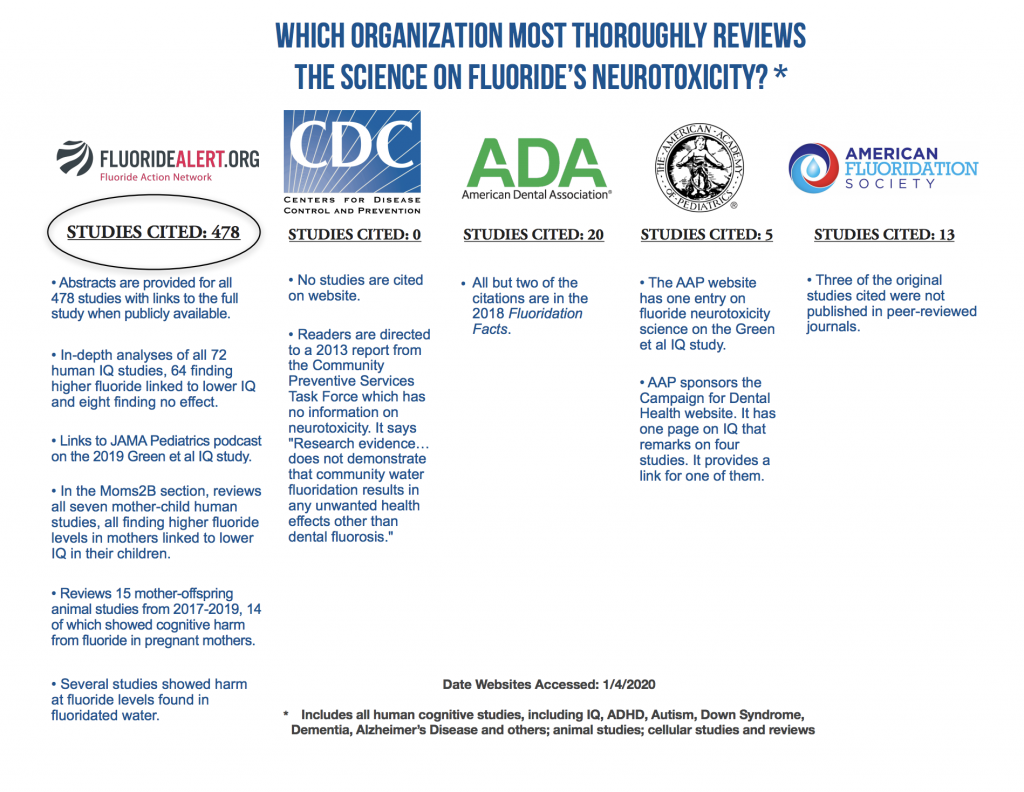“Covid” and Chemtrails
“Covid” and Chemtrails
by Mike Stone, Viroliegy
April 9, 2022

A few months ago, I wrote an article exploring the connection between the symptoms of disease known as “Covid-19” and air pollution. While air pollution is not the only factor currently causing disease, I laid out why I believe that this is the most likely explanation for any perceived increase in respiratory symptoms of disease. I provided a general overview on the problem of air pollution and how it can impact our health and environment. Within the article, I touched upon the issue of persistent contrails, a.k.a. chemtrails, and provided information directly from Government sources admitting the impact that these trails have on our health and environment. Even though this information is readily available to anyone willing to look, there are many out there who still seem to believe that these trails are harmless. They claim that I am promoting nothing but a baseless conspiracy theory.
The fact of the matter is that these trails are admitted to be harmful to our health and environment by both sides of the “chemtrail” debate. There is no conspiracy theory here. This is a FACT. We can speculate as to who is doing this and why but that is ultimately irrelevant. While pollution from automobiles, factories, power plants, forest fires, etc. all contribute to this air pollution health crisis, the harmful effects from the aviation industry are regularly glossed over and/or omitted when this issue is discussed. However, if you dig deep enough and actually search for the information, what can be found to be admitted by official Government sources regarding the health consequences from these trails is very telling and disturbing.

To start with, I want to provide a quick breakdown of the negative health impact of just one component that is admitted to be found within these persistent trails left in the wake of aircrafts. This is known as particulate matter, the most dangerous of which is PM2.5. From the Environmental Protection Agency (EPA), you will see that PM2.5 is a known toxin potentially made up of hundreds of different chemicals that is so small that it can collect deep within the lungs and even enter the bloodstream. It has been associated with cardiovascular and respiratory disease, irritation of the eyes, throat, and lungs, and premature death:
Particulate Matter (PM) Basics
What is PM, and how does it get into the air?
“PM stands for particulate matter (also called particle pollution): the term for a mixture of solid particles and liquid droplets found in the air. Some particles, such as dust, dirt, soot, or smoke, are large or dark enough to be seen with the naked eye. Others are so small they can only be detected using an electron microscope.
Particle pollution includes:
PM10: inhalable particles, with diameters that are generally 10 micrometers and smaller; and
PM2.5: fine inhalable particles, with diameters that are generally 2.5 micrometers and smaller.
-
- How small is 2.5 micrometers? Think about a single hair from your head. The average human hair is about 70 micrometers in diameter – making it 30 times larger than the largest fine particle.
- How small is 2.5 micrometers? Think about a single hair from your head. The average human hair is about 70 micrometers in diameter – making it 30 times larger than the largest fine particle.
Sources of PM
These particles come in many sizes and shapes and can be made up of hundreds of different chemicals.
Some are emitted directly from a source, such as construction sites, unpaved roads, fields, smokestacks or fires.
Most particles form in the atmosphere as a result of complex reactions of chemicals such as sulfur dioxide and nitrogen oxides, which are pollutants emitted from power plants, industries and automobiles.
What are the Harmful Effects of PM?
Particulate matter contains microscopic solids or liquid droplets that are so small that they can be inhaled and cause serious health problems. Some particles less than 10 micrometers in diameter can get deep into your lungs and some may even get into your bloodstream. Of these, particles less than 2.5 micrometers in diameter, also known as fine particles or PM2.5, pose the greatest risk to health.
Fine particles are also the main cause of reduced visibility (haze) in parts of the United States, including many of our treasured national parks and wilderness areas.”
https://www.epa.gov/pm-pollution/particulate-matter-pm-basics
Health and Environmental Effects of Particulate Matter (PM)
Health Effects
The size of particles is directly linked to their potential for causing health problems. Small particles less than 10 micrometers in diameter pose the greatest problems, because they can get deep into your lungs, and some may even get into your bloodstream.
Exposure to such particles can affect both your lungs and your heart. Numerous scientific studies have linked particle pollution exposure to a variety of problems, including:
-
-
- premature death in people with heart or lung disease
- nonfatal heart attacks
- irregular heartbeat
- aggravated asthma
- decreased lung function
- increased respiratory symptoms, such as irritation of the airways, coughing or difficulty breathing.
-
People with heart or lung diseases, children, and older adults are the most likely to be affected by particle pollution exposure.
https://www.epa.gov/pm-pollution/health-and-environmental-effects-particulate-matter-pm
PM2.5 and other particulate matter is only part of the dangerous substances found in these persistent contrails. Other admitted substances include carbon dioxide (CO2), volatile organic compounds (VOC), nitrogen oxides (NOX), sulfur oxides (SOX), black carbon soot, and other trace metals. It is simply beyond logic and reasoning to believe that the inhalation of these substances on a daily basis is not harmful to one’s health.
Recently, some members of Congress were interested in addressing the health and environmental problems associated with aviation. On February 8th, 2022, the Congressional Research Service released a report describing the problem and how to address it. A few highlights showcase that aviation pollution is the fastest-growing pollutant over the past decade and that there are numerous toxic substances found within these trails:
Aviation, Air Pollution, and Climate Change
Emissions from Aircraft
“The U.S. Environmental Protection Agency (EPA) estimates that transportation—including passenger cars and light trucks, heavy-duty trucks, buses, trains, ships, and aircraft—accounted for 35% of carbon dioxide (CO2, the principal GHG) emissions in 2018. While CO2 emissions from passenger cars and light trucks exceed those from aircraft in the United States, CO2 emissions from aviation are currently experiencing a faster rate of growth. All aircraft, including military, commercial, and privately chartered, accounted for 13% of the U.S. transportation sector’s CO2 emissions and 5% of all U.S. CO2 emissions in 2018. Commercial aircraft, including those operated by passenger and all-cargo airlines, accounted for 11% of transportation sector and 4% of all emissions. These estimates include emissions from U.S. domestic flights and emissions from international flights departing the United States, referred to as “international bunkering.”
In the United States, aggregate CO2 emissions from aircraft have fluctuated due to changes in technology, the economy, travel frequency, and military activity, among other reasons. However, since the global financial crisis in 2009,aggregate CO2 emissions from all aircraft types have grown steadily, increasing by almost 22% between 2009 and 2018. This increase makes aircraft one of the faster-growing sources of CO2 emissions in the U.S. transportation sector over the past decade. This trend is likely to be affected, at least temporarily, by reduced air travel in 2020 and 2021 due to Coronavirus Disease 2019 (COVID-19).
The effects of aircraft emissions on the atmosphere are complex, reflecting differing altitudes, geography, time horizons, and environmental conditions. Research has shown that in addition to CO2 emissions, other factors increase the climate change impacts of aviation. These factors include the contribution of aircraft emissions to ozone production; the formation of water condensation trails and cirrus clouds; the emission of various gases and particles, including water vapor, nitrous oxides, sulfates, and particulates from jet fuel combustion; and the high altitude location of the bulk of these emissions. In examining the warming and cooling influences of these factors, the United Nations’ Intergovernmental Panel on Climate Change estimated aviation’s total climate change impact could be from two to four times that of its past CO2 emissions alone.
Aside from GHG emissions, aircraft engines emit a number of criteria—or common—pollutants, including nitrogen oxides, carbon monoxide, oxides of sulfur, unburned or partially combusted hydrocarbons (also known as volatile organic compounds [VOCs]), particulates, and other trace compounds. A subset of the VOCs and particulates are considered hazardous air pollutants.”
https://crsreports.congress.gov/product/pdf/IF/IF11696

As can be seen, the pollution coming from the aviation industry is a fast-growing problem that is impacting our health and environment in numerous ways. While this has been known for decades and solutions have been presented to try and reverse the impact, nothing is ever implemented to fix the problem. Solutions are only useful if they are enacted upon. While Congress gathers reports, there is little action taken in regards to those reports. It is one thing to acknowledge the negative health and environmental impact yet it is another thing entirely to actually shake up the industry by doing something about it. This seems not to be a major concern as these trails have become worse over time, increasingly contributing to erratic weather, disease, and premature death.
For further evidence of the impact that these trails have on our health and environment, we can turn once again to the EPA to provide more detail. In a document from January 11th, 2021, the EPA enacted standards that are supposed to combat greenhouse gas emissions from the aviation industry. In this document are findings from reports they had compiled in 2016 which call out the dangers these trails have on the public health and welfare:
Control of Air Pollution From Airplanes and Airplane Engines: GHG Emission Standards and Test Procedures
“In August 2016, the EPA issued two findings regarding GHG emissions from aircraft engines (the 2016 Findings).[7] First, the EPA found that elevated concentrations of GHGs in the atmosphere endanger the public health and welfare of current and future generations within the meaning of section 231(a)(2)(A) of the CAA. Second, EPA found that emissions of GHGs from certain classes of engines used in certain aircraft are contributing to the air pollution that endangers public health and welfare under CAA section 231(a)(2)(A). Additional details of the 2016 Findings are described in Section III. As a result of the 2016 Findings, CAA sections 231(a)(2)(A) and (3) obligate the EPA to propose and adopt, respectively, GHG standards for these covered aircraft engines.”
III. Summary of the 2016 Findings
“On August 15, 2016,[46] the EPA issued two findings regarding GHG emissions from aircraft engines. First, the EPA found that elevated concentrations of GHGs in the atmosphere endanger the public health and welfare of current and future generations within the meaning of section 231(a)(2)(A) of the CAA. The EPA made this finding specifically with respect to the same six well-mixed GHGs—CO2, methane, N2 O, hydrofluorocarbons, perfluorocarbons, and sulfur hexafluoride—that together were defined as the air pollution in the 2009 Endangerment Finding [47] under section 202(a) of the CAA and that together were found to constitute the primary cause of climate change. Second, the EPA found that emissions of those six well-mixed GHGs from certain classes of engines used in certain aircraft [48] cause or contribute to the air pollution—the aggregate group of the same six GHGs—that endangers public health and welfare under CAA section 231(a)(2)(A).”
Contrail Cirrus Clouds
In February of 2022, the EPA proposed standards that would reflect the importance of the control of PM emissions in aviation. They were looking to secure the highest practicable degree of uniformity in aviation regulations and standards. Within this proposal, the EPA provided plenty of insight into the potential health impacts of PM2.5 on human health such as cardiovascular disease, respiratory disease, neurological disorders, asthma, cancer, ferility/reproductive problems, and premature death. They also outlined the impact the chemicals in the trails have on the environment such as affecting the metabolic processes of plant foliage, altering the soil biogeochemistry and microbiology, disrupting plant and animal growth and reproduction, and the corrosion of metals and soil. They even provided more detail on the make-up of the composition of the dangerous toxins inside these trails with the addition of carcinogens such as benzene, 1,3-butadiene, formaldehyde, acetaldehyde, acrolein, polycyclic organic matter (POM), and certain metals such as chromium, manganese, and nickel. Judging by this information alone, it should be rather clear that these trails are negatively impacting our health and environment in numerous ways:
Control of Air Pollution From Aircraft Engines: Emission Standards and Test Procedures
III. Particulate Matter Impacts on Air Quality and Health
A. Background on Particulate Matter
“Particulate matter (PM) is a highly complex mixture of solid particles and liquid droplets distributed among numerous atmospheric gases which interact with solid and liquid phases. Particles range in size from those smaller than 1 nanometer (10−9 meter) to over 100 micrometers (μm, or 10−6 meter) in diameter (for reference, a typical strand of human hair is 70 μm in diameter and a grain of salt is about 100 μm). Atmospheric particles can be grouped into several classes according to their aerodynamic and physical sizes. Generally, the three broad classes of particles include ultrafine particles (UFPs, generally considered as particulates with a diameter less than or equal to 0.1 μm (typically based on physical size, thermal diffusivity or electrical mobility)), “fine” particles (PM2.5; particles with a nominal mean aerodynamic diameter less than or equal to 2.5 μm), and “thoracic” particles (PM10; particles with a nominal mean aerodynamic diameter less than or equal to 10 μm). Particles that fall within the size range between PM2.5 and PM10, are referred to as “thoracic coarse particles” (PM10-2.5, particles with a nominal mean aerodynamic diameter less than or equal to 10 μm and greater than 2.5 μm).
Particles span many sizes and shapes and may consist of hundreds of different chemicals. Particles are emitted directly from sources and are also formed through atmospheric chemical reactions between PM precursors; the former are often referred to as “primary” particles, and the latter as “secondary” particles. Particle concentration and composition varies by time of year and location, and, in addition to differences in source emissions, is affected by several weather-related factors, such as temperature, clouds, humidity, and wind. Ambient levels of PM are also impacted by particles’ ability to shift between solid/liquid and gaseous phases, which is influenced by concentration, meteorology, and especially temperature.
Fine particles are produced primarily by combustion processes and by transformations of gaseous emissions ( e.g., sulfur oxides (SOX), nitrogen oxides (NOX) and volatile organic compounds (VOCs)) in the atmosphere. The chemical and physical properties of PM2.5 may vary greatly with time, region, meteorology, and source category. Thus, PM2.5 may include a complex mixture of different components including sulfates, nitrates, organic compounds, elemental carbon, and metal compounds. These particles can remain in the atmosphere for days to weeks and travel through the atmosphere hundreds to thousands of kilometers.
Particulate matter is comprised of both volatile and non-volatile PM. PM emitted from the engine is known as non-volatile PM (nvPM), and PM formed from transformation of an engine’s gaseous emissions are defined as volatile PM.[35] Because of the difficulty in measuring volatile PM, which is formed in the engine’s exhaust plume and is significantly influenced by ambient conditions, the EPA is proposing standards only for the emission of nvPM.
B. Health Effects of Particulate Matter
Scientific studies show exposure to ambient PM is associated with a broad range of health effects. These health effects are discussed in detail in the Integrated Science Assessment for Particulate Matter (PM ISA), which was finalized in December 2019.[36] The PM ISA concludes that human exposures to ambient PM2.5 are associated with a number of adverse health effects and characterizes the weight of evidence for broad health categories ( e.g., cardiovascular effects, respiratory effects, etc.).[37] The PM ISA additionally notes that stratified analyses ( i.e., analyses that directly compare PM-related health effects across groups) provide strong evidence for racial and ethnic differences in PM2.5 exposures and in PM2.5 -related health risk. As described in Section III.D, concentrations of PM increase with proximity to an airport. Further, studies described in Section III.G report that many communities in close proximity to airports are disproportionately represented by people of color and low-income populations.
EPA has concluded that recent evidence in combination with evidence evaluated in the 2009 p.m. ISA supports a “causal relationship” between both long- and short-term exposures to PM2.5 and mortality and cardiovascular effects and a “likely to be causal relationship” between long- and short-term PM2.5 exposures and respiratory effects.[38] Additionally, recent experimental and epidemiologic studies provide evidence supporting a “likely to be causal relationship” between long-term PM2.5 exposure and nervous system effects, and long-term PM2.5 exposure and cancer. In addition, EPA noted that there was more limited and uncertain evidence for long-term PM2.5 exposure and reproductive and developmental effects ( i.e., male/female reproduction and fertility; pregnancy and birth outcomes), long- and short-term exposures and metabolic effects, and short-term exposure and nervous system effects resulting in the ISA concluding “suggestive of, but not sufficient to infer, a causal relationship.”
More detailed information on the health effects of PM can be found in a memorandum to the docket.[39]
C. Environmental Effects of Particulate Matter
Environmental effects that can result from particulate matter emissions include visibility degradation, plant and ecosystem effects, deposition effects, and materials damage and soiling. These effects are briefly summarized here and discussed in more detail in the memo to the docket cited above.
PM2.5 emissions also adversely impact visibility.[40] In the Clean Air Act Amendments of 1977, Congress recognized visibility’s value to society by establishing a national goal to protect national parks and wilderness areas from visibility impairment caused by manmade pollution.[41] In 1999, EPA finalized the regional haze program (64 FR 35714) to protect the visibility in Mandatory Class I Federal areas. There are 156 national parks, forests and wilderness areas categorized as Mandatory Class I Federal areas (62 FR 38680-38681, July 18, 1997). These areas are defined in CAA section 162 as those national parks exceeding 6,000 acres, wilderness areas and memorial parks exceeding 5,000 acres, and all international parks which were in existence on August 7, 1977. EPA has also concluded that PM2.5 causes adverse effects on visibility in other areas that are not targeted by the Regional Haze Rule, such as urban areas, depending on PM2.5 concentrations and other factors such as dry chemical composition and relative humidity ( i.e., an indicator of the water composition of the particles). EPA established the secondary 24-hour PM2.5 NAAQS in 1997 and has retained the standard in subsequent reviews.[42] This standard is expected to provide protection against visibility effects through attainment of the existing secondary standards for PM2.5 . EPA is reconsidering the 2020 decision, as announced on June 10, 2021.[43]
1. Deposition of Metallic and Organic Constituents of PM
Several significant ecological effects are associated with deposition of chemical constituents of ambient PM such as metals and organics.[44] Like all internal combustion engines, turbine engines covered by this rule may emit trace amounts of metals due to fuel contamination or engine wear. Ecological effects of PM include direct effects to metabolic processes of plant foliage; contribution to total metal loading resulting in alteration of soil biogeochemistry and microbiology, plant and animal growth and reproduction; and contribution to total organics loading resulting in bioaccumulation and biomagnification.
2. Materials Damage and Soiling
Deposition of PM is associated with both physical damage (materials damage effects) and impaired aesthetic qualities (soiling effects). Wet and dry deposition of PM can physically affect materials, adding to the effects of natural weathering processes, by potentially promoting or accelerating the corrosion of metals, by degrading paints and by deteriorating building materials such as stone, concrete and marble.[45]
D. Near-Source Impacts on Air Quality and Public Health
Airport activity can adversely impact air quality in the vicinity of airports. Furthermore, these adverse impacts may disproportionately impact sensitive subpopulations. A recent study by Yim et al. (2015) assessed global, regional, and local health impacts of civil aviation emissions, using modeling tools that address environmental impacts at different spatial scales.[46] The study attributed approximately 16,000 premature deaths per year globally to global aviation emissions, with 87 percent attributable to PM2.5 . The study concludes that about a third of these mortalities are attributable to PM2.5 exposures within 20 kilometers of an airport. Another study focused on the continental United States estimated 210 deaths per year attributable to PM2.5 from aircraft.[47] While there are considerable uncertainties associated with such estimates, these results suggest that in addition to the contributions of PM2.5 emissions to regional air quality, impacts on public health of these emissions in the vicinity of airports are an important public health concern.
A significant body of research has addressed pollutant levels and potential health effects in the vicinity of airports. Much of this research was synthesized in a 2015 report published by the Airport Cooperative Research Program (ACRP), conducted by the Transportation Research Board.[48] The report concluded that PM2.5 concentrations in and around airports vary considerably, ranging from “relatively low levels to those that are close to the NAAQS, and in some cases, exceeding the standards.” [49]
Furthermore, the report states (p. 40) that “existing studies indicate that ultrafine particle concentrations are highly elevated at an airport ( i.e., near a runway) with particle counts that can be orders of magnitude higher than background with some persistence many meters downwind ( e.g., 600 m). Finally, the report concludes that PM2.5 dominates overall health risks posed by airport emissions. Moreover, one recently published study concluded that emissions from aircraft play an etiologic role in pre-term births, independent of noise and traffic-related air pollution exposures.[50]
Since the publication of the 2015 ACRP literature review, a number of studies conducted in the U. S. have been published which concluded that ultrafine particle number concentrations were elevated downwind of commercial airports, and that proximity to an airport also increased particle number concentrations within residences. Hudda et al. investigated ultrafine particle number concentrations (PNC) inside and outside 16 residences in the Boston metropolitan area. They found elevated outdoor PNC within several kilometers of the airport. They also found that aviation-related PNC infiltrated indoors and resulted in significantly higher indoor PNC.[51] In another study in the vicinity of Logan airport, Hudda et al. analyzed PNC impacts of aviation activities.[52] They found that, at sites 4.0 and 7.3 km from the airport, average PNCs were 2 and 1.33-fold higher, respectively, when winds were from the direction of the airport compared to other directions, indicating that aviation impacts on PNC extend many kilometers downwind of Logan airport. Stacey (2019) conducted a literature survey and concluded that the literature consistently reports that particle numbers close to airports are significantly higher than locations distant and upwind of airports, and that the particle size distribution is different from traditional road traffic, with more extremely fine particles.[53] Similar findings have been published from European studies.[54 55 56 57 58 59 ] Results of a monitoring study of communities near Seattle-Tacoma International Airport also found higher levels of ultrafine PM near the airport, and an impacted area larger than at near-roadway sites.[60] The PM associated with aircraft landing activity was also smaller in size, with lower black carbon concentrations than near-roadway samples. As discussed above, PM2.5 exposures are associated with a number of serious, adverse health effects. Further, the PM attributable to aircraft emissions has been associated with potential adverse health impacts.[61 62] For example, He et al. (2018) found that particle composition, size distribution and internalized amount of particles near airports all contributed to promotion of reactive organic species in bronchial epithelial cells.
Because of these potential impacts, a systematic literature review was recently conducted to identify peer-reviewed literature on air quality near commercial airports and assess the quality of the studies.[63] The systematic review identified seventy studies for evaluation. These studies consistently showed that particulate matter, in the form of ultrafine PM (UFP), is elevated in and around airports. Furthermore, many studies showed elevated levels of black carbon, criteria pollutants, and polycyclic aromatic hydrocarbons as well. Finally, the systematic review, while not focused on health effects, identified a limited number of references reporting adverse health effects impacts, including increased rates of premature death, pre-term births, decreased lung function, oxidative DNA damage and childhood leukemia. More research is needed linking particle size distributions to specific airport activities, and proximity to airports, characterizing relationships between different pollutants, evaluating long-term impacts, and improving our understanding of health effects.
A systematic review of health effects associated with exposure to jet engine emissions in the vicinity of airports was also recently published.[64] This study concluded that literature on health effects was sparse, but jet engine emissions have physicochemical properties similar to diesel exhaust particles, and that exposure to jet engine emissions is associated with similar adverse health effects as exposure to diesel exhaust particles and other traffic emissions. A 2010 systematic review by the Health Effects Institute (HEI) concluded that evidence was sufficient to support a causal relationship between exposure to traffic-related air pollution and exacerbation of asthma among children, and suggestive of a causal relationship for childhood asthma, non-asthma respiratory symptoms, impaired lung function and cardiovascular mortality.[65]”
F. Other Pollutants Emitted by Aircraft
“In addition to particulate matter, a number of other criteria pollutants are emitted by the aircraft which are the subject of this proposed rule. These pollutants, which are not covered by the rule, include nitrogen oxides (NOX), including nitrogen dioxide (NO2), volatile organic compounds (VOC), carbon monoxide (CO), and sulfur dioxide (SO2). Aircraft also contribute to ambient levels of hazardous air pollutants (HAP), compounds that are known or suspected human or animal carcinogens, or that have noncancer health effects. These compounds include, but are not limited to, benzene, 1,3-butadiene, formaldehyde, acetaldehyde, acrolein, polycyclic organic matter (POM), and certain metals. Some POM and HAP metals are components of PM2.5 mass measured in turbine engine aircraft emissions.[70]
The term polycyclic organic matter (POM) defines a broad class of compounds that includes the polycyclic aromatic hydrocarbon compounds (PAHs). POM compounds are formed primarily from combustion and are present in the atmosphere in gas and particulate form. Metal compounds emitted from aircraft turbine engine combustion include chromium, manganese, and nickel. Several POM compounds, as well as hexavalent chromium, manganese compounds and nickel compounds are included in the National Air Toxics Assessment, based on potential carcinogenic risk.[71] In addition, as mentioned previously, deposition of metallic compounds can have ecological effects. Impacts of POM and metals are further discussed in the memorandum to the docket referenced above.”
In Summary:
- PM stands for particulate matter – the term for a mixture of solid particles and liquid droplets found in the air
- Some particles, such as dust, dirt, soot, or smoke, are large or dark enough to be seen with the naked eye while others are too small to be seen
- PM10: inhalable particles, with diameters that are generally 10 micrometers and smaller
- PM2.5: fine inhalable particles, with diameters that are generally 2.5 micrometers and smaller
- These particles come in many sizes and shapes and can be made up of hundreds of different chemicals
- Most particles form in the atmosphere as a result of complex reactions of chemicals such as sulfur dioxide and nitrogen oxides
- Particulate matter contains microscopic solids or liquid droplets that are so small that they can be inhaled and cause serious health problems
- Some particles less than 10 micrometers in diameter can get deep into your lungs and some may even get into your bloodstream
- Fine particles are also the main cause of reduced visibility (haze) in parts of the United States
- The size of particles is directly linked to their potential for causing health problems
- Exposure to such particles can affect both your lungs and your heart
- Numerous scientific studies have linked particle pollution exposure to a variety of problems, including:
- Premature death in people with heart or lung disease
- Nonfatal heart attacks
- Irregular heartbeat
- Aggravated asthma
- Decreased lung function
- Increased respiratory symptoms, such as irritation of the airways, coughing or difficulty breathing
- People with heart or lung diseases, children, and older adults are the most likely to be affected by particle pollution exposure
- According to a Congressional Research Service report from February 8th, 2022, CO2 emissions from aviation are currently experiencing a faster rate of growth than other sources
- All aircraft, including military, commercial, and privately chartered, accounted for 13% of the U.S. transportation sector’s CO2 emissions and 5% of all U.S. CO2 emissions in 2018
- Commercial aircraft, including those operated by passenger and all-cargo airlines, accounted for 11% of transportation sector and 4% of all emissions
- Since the global financial crisis in 2009, aggregate CO2 emissions from all aircraft types have grown steadily, increasing by almost 22% between 2009 and 2018
- This increase makes aircraft one of the faster-growing sources of CO2 emissions in the U.S. transportation sector over the past decade
- The effects of aircraft emissions on the atmosphere are complex, reflecting differing altitudes, geography, time horizons, and environmental conditions
- Research has shown that in addition to CO2 emissions, other factors increase the climate change impacts of aviation which include:
- The contribution of aircraft emissions to ozone production
- The formation of water condensation trails and cirrus clouds
- The emission of various gases and particles, including water vapor, nitrous oxides, sulfates, and particulates from jet fuel combustion
- The high altitude location of the bulk of these emissions
- In examining the warming and cooling influences of these factors, the United Nations’ Intergovernmental Panel on Climate Change estimated aviation’s total climate change impact could be from two to four times that of its past CO2 emissions alone
- Aside from GHG emissions, aircraft engines emit a number of criteria—or common—pollutants, including:
- Nitrogen oxides
- Carbon monoxide
- Oxides of sulfur
- Unburned or partially combusted hydrocarbons (also known as volatile organic compounds [VOCs])
- Particulates
- Other trace compounds
- A subset of the VOCs and particulates are considered hazardous air pollutants
- According to a 2021 report by the EPA, they found that elevated concentrations of GHGs in the atmosphere endanger the public health and welfare of current and future generations within the meaning of section 231(a)(2)(A) of the CAA
- Second, EPA found that emissions of GHGs from certain classes of engines used in certain aircraft are contributing to the air pollution that endangers public health and welfare under CAA section 231(a)(2)(A)
- The EPA made this finding specifically with respect to the same six well-mixed GHGs—CO2, methane, N2O, hydrofluorocarbons, perfluorocarbons, and sulfur hexafluoride—that together were defined as the air pollution in the 2009 Endangerment Finding under section 202(a) of the CAA and that together were found to constitute the primary cause of climate change
- The EPA found that emissions of those six well-mixed GHGs from certain classes of engines used in certain aircraft cause or contribute to the air pollution—the aggregate group of the same six GHGs—that endangers public health and welfare under CAA section 231(a)(2)(A)
- Another report by the EPA from February 2022 states that particulate matter (PM) is a highly complex mixture of solid particles and liquid droplets distributed among numerous atmospheric gases which interact with solid and liquid phases
- Particles span many sizes and shapes and may consist of hundreds of different chemicals
- Fine particles are produced primarily by combustion processes and by transformations of gaseous emissions (e.g., sulfur oxides (SOX), nitrogen oxides (NOX) and volatile organic compounds (VOCs)) in the atmosphere
- PM2.5 may include a complex mixture of different components including sulfates, nitrates, organic compounds, elemental carbon, and metal compounds
- These particles can remain in the atmosphere for days to weeks and travel through the atmosphere hundreds to thousands of kilometers
- Particulate matter is comprised of both volatile and non-volatile PM
- PM emitted from the engine is known as non-volatile PM (nvPM), and PM formed from transformation of an engine’s gaseous emissions are defined as volatile PM
- Because of the difficulty in measuring volatile PM, which is formed in the engine’s exhaust plume and is significantly influenced by ambient conditions, the EPA is proposing standards only for the emission of nvPM
- In other words, there are no standards proposed by the EPA for the transformation these chemicals go through after leaving the engine when they become lingering trails
- Scientific studies show exposure to ambient PM is associated with a broad range of health effects
- The PM ISA concludes that human exposures to ambient PM2.5 are associated with a number of adverse health effects and characterizes the weight of evidence for broad health categories ( e.g., cardiovascular effects, respiratory effects, etc.)
- EPA has concluded that recent evidence in combination with evidence evaluated in the 2009 p.m. ISA supports a “causal relationship” between both long- and short-term exposures to PM2.5 and mortality and cardiovascular effects and a “likely to be causal relationship” between long- and short-term PM2.5 exposures and respiratory effects
- Additionally, recent experimental and epidemiologic studies provide evidence supporting a “likely to be causal relationship” between long-term PM2.5 exposure and nervous system effects, and long-term PM2.5 exposure and cancer
- In addition, EPA noted that there was more limited and uncertain evidence for long-term PM2.5 exposure and reproductive and developmental effects ( i.e., male/female reproduction and fertility; pregnancy and birth outcomes), long- and short-term exposures and metabolic effects, and short-term exposure and nervous system effects resulting in the ISA concluding “suggestive of, but not sufficient to infer, a causal relationship”
- Environmental effects that can result from particulate matter emissions include:
- Visibility degradation
- Plant and ecosystem effects
- Deposition effects
- Materials damage and soiling
- PM2.5 emissions also adversely impact visibility
- Like all internal combustion engines, turbine engines covered by this rule may emit trace amounts of metals due to fuel contamination or engine wear
- Ecological effects of PM include:
- Direct effects to metabolic processes of plant foliage
- Contribution to total metal loading resulting in alteration of soil biogeochemistry and microbiology, plant and animal growth and reproduction
- Contribution to total organics loading resulting in bioaccumulation and biomagnification
- Deposition of PM is associated with both physical damage (materials damage effects) and impaired aesthetic qualities (soiling effects)
- Wet and dry deposition of PM can physically affect materials, adding to the effects of natural weathering processes, by potentially promoting or accelerating the corrosion of metals, by degrading paints and by deteriorating building materials such as stone, concrete and marble
- A recent study by Yim et al. (2015) assessed global, regional, and local health impacts of civil aviation emissions, using modeling tools that address environmental impacts at different spatial scales
- The study attributed approximately 16,000 premature deaths per year globally to global aviation emissions, with 87 percent attributable to PM2.5
- The study concluded that about a third of these mortalities are attributable to PM2.5 exposures within 20 kilometers of an airport
- Another study focused on the continental United States estimated 210 deaths per year attributable to PM2.5 from aircraft
- Impacts on public health of these emissions in the vicinity of airports are an important public health concern
- A 2015 report concluded that PM2.5 concentrations in and around airports vary considerably, ranging from “relatively low levels to those that are close to the NAAQS, and in some cases, exceeding the standards.”
- Furthermore, the report stated (p. 40) that “existing studies indicate that ultrafine particle concentrations are highly elevated at an airport ( i.e., near a runway) with particle counts that can be orders of magnitude higher than background with some persistence many meters downwind ( e.g., 600 m)
- Finally, the report concluded that PM2.5 dominates overall health risks posed by airport emissions
- Hudda et al. investigated ultrafine particle number concentrations (PNC) inside and outside 16 residences in the Boston metropolitan area and found that aviation-related PNC infiltrated indoors and resulted in significantly higher indoor PNC
- Stacey (2019) conducted a literature survey and concluded that the literature consistently reports that particle numbers close to airports are significantly higher than locations distant and upwind of airports, and that the particle size distribution is different from traditional road traffic, with more extremely fine particles
- PM2.5 exposures are associated with a number of serious, adverse health effects and the PM attributable to aircraft emissions has been associated with potential adverse health impacts
- He et al. (2018) found that particle composition, size distribution and internalized amount of particles near airports all contributed to promotion of reactive organic species in bronchial epithelial cells
- A systematic review of 70 studies consistently showed that particulate matter, in the form of ultrafine PM (UFP), is elevated in and around airports
- Furthermore, many studies showed elevated levels of black carbon, criteria pollutants, and polycyclic aromatic hydrocarbons as well
- Finally, the systematic review, while not focused on health effects, identified a limited number of references reporting adverse health effects impacts, including increased rates of premature death, pre-term births, decreased lung function, oxidative DNA damage and childhood leukemia
- A systematic review of health effects associated with exposure to jet engine emissions in the vicinity of airports found that jet engine emissions have physicochemical properties similar to diesel exhaust particles, and that exposure to jet engine emissions is associated with similar adverse health effects as exposure to diesel exhaust particles and other traffic emissions
- A 2010 systematic review by the Health Effects Institute (HEI) concluded that evidence was sufficient to support a causal relationship between exposure to traffic-related air pollution and exacerbation of asthma among children, and suggestive of a causal relationship for childhood asthma, non-asthma respiratory symptoms, impaired lung function and cardiovascular mortality
- Besides PM2.5, other harmful pollutants, which are not covered by the rule, include:
- Nitrogen oxides (NOX)
- Nitrogen dioxide (NO2)
- Volatile organic compounds (VOC)
- Carbon monoxide (CO)
- Sulfur dioxide (SO2)
- Aircraft also contribute to ambient levels of hazardous air pollutants (HAP), compounds that are known or suspected human or animal carcinogens, or that have noncancer health effects
- These compounds include, but are not limited to:
- Benzene,
- 1,3-butadiene
- Formaldehyde
- Acetaldehyde
- Acrolein
- Polycyclic organic matter (POM)
- Certain metals
- Some POM and HAP metals are components of PM2.5 mass measured in turbine engine aircraft emissions
- The term polycyclic organic matter (POM) defines a broad class of compounds that includes the polycyclic aromatic hydrocarbon compounds (PAHs)
- Metal compounds emitted from aircraft turbine engine combustion include:
- Chromium
- Manganese
- Nickel
- Several POM compounds, as well as hexavalent chromium, manganese compounds and nickel compounds are included in the National Air Toxics Assessment, based on potential carcinogenic risk
When dealing with a potential health threat, we tend to jump to the conclusion that we are facing a new “virus” as this well-orchestrated lie has been drilled into our collective consciousness since birth. It is second nature to blame the new invisible boogeyman while overlooking the old visible threats that have been plaguing us for years with no end in sight. It seems too easy to admit to ourselves that any perceived increase in respiratory disease could be attributable to the continued increase in air pollution.
Yet from the start, “Covid-19” has been linked to air pollution. The areas hit the hardest were those with the highest levels of these harmful toxins in the air. As travel died down during the lockdowns, cases fell along with subsiding smog. As travel and pollution rose up again, so too did the “Covid” cases. Even small increases in air pollution has been shown to have an impact on “Covid” case numbers and deaths.
We know for a fact that air pollution is harmful to our health and environment. We know that every single symptom of disease associated with “Covid-19” can be linked to the PM2.5 particles which make up the majority of the dirty air we breathe. We know for a fact that automobiles, factories, power plants, forest fires, volcanic eruptions, etc. all contribute to the harmful levels of toxins in the air. However, the one thing we have been told not to question as a contributor to our current problems are the lingering trails in the sky which form artificial clouds blocking out the beneficial rays of the sun. We are told that these are just regular old contrails from commercial airliners made up of ice crystals which eventually dissipate into a completely safe and harmless nothingness. Anyone questioning the trails is immediately labelled a conspiracy theorist.
It should be clear now, whether you call them chemtrails or not, that these persistent streaks in the sky are full of dangerous substances that attack the cardiovascular, respiratory, and neurological systems. Thanks to government sources such as the EPA and the Congressional Research Service, we know that these trails are the fastest growing pollutant in the air and that they are contributing to even greater levels of smog and haze. The trails and the artificial cirrus clouds they form are a near constant sight in the sky these days and the problem is only growing worse with time. The damaging effects that these lines in the sky have on our health and environment is not even debatable. It is agreed upon by both sides of the debate. That these “persistent contrails” are harmful to our health and environment is a FACT. That the chemicals and toxins found within the vapors cause the exact same symptoms of disease as “Covid-19” is not a coincidence.
Thus we are left with two choices. We can either believe the official narrative that a new “virus” of unknown origin magically leapt from animal to man or somehow escaped from a lab and infected millions of people with a disease that causes the exact same symptoms associated with allergies, the common cold, the flu, and pneumonia. And with it’s rise, it has eliminated the majority of the cases of those previous ailments and can also constantly mutate (over 10 million versions now according to GISAID.org) in order to slip by every possible measure to contain it including masks, social distancing, lockdowns, quarantines, vaccines, etc.
Or we can believe that the ever-increasing and constant daily exposure to air pollution has taken a toll on the populace damaging the health and environment of everyone living within these dangerous levels of toxic fumes. While this is not the only explanation for any perceived increase in respiratory and other diseases, it is the most logical one over an invisible “virus.” According to Occam’s Razor, the simplest of competing theories should be preferred over those that are more complex and that explanations of unknown phenomena should be sought first in terms of known quantities. We know air pollution is harmful. We know that these trails are increasing at a faster rate than any other pollutant. We know that the chemicals residing within them are associated with the exact same symptoms of disease that are ascribed to “Covid.” Unlike a “virus,” we can see this boogeyman with our own two eyes.
All we have to do is look up.
From their own sources, the trails are a threat to our health and our environment. Contrary to what they want you to believe about “persistent contrails,” a.k.a. chemtrails, this is NOT a conspiracy.
You can see more of the slides from Government sources that were presented within this article here.
Connect with Mike Stone at Viroliegy
cover image credit: pixundfertig / pixabay





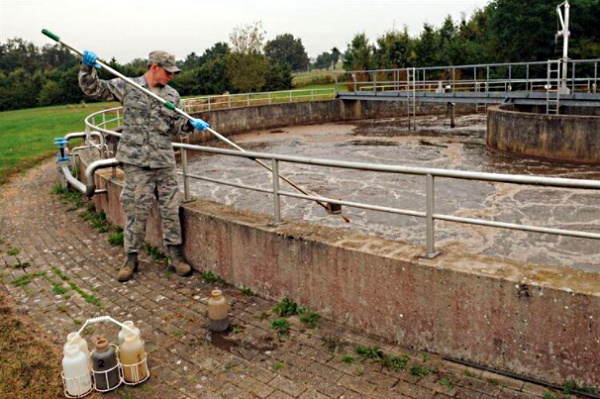



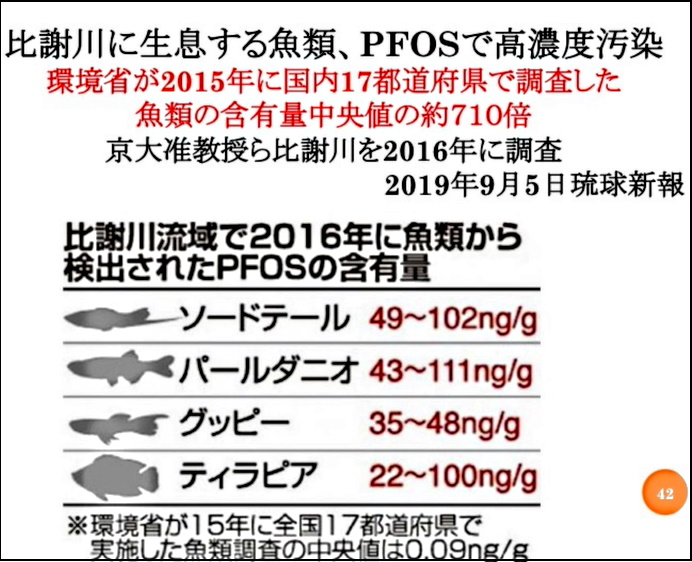
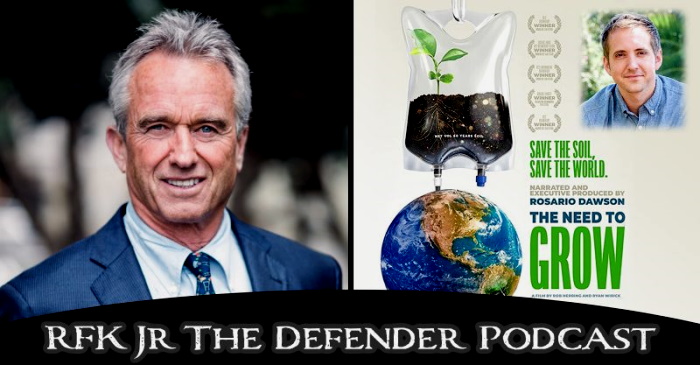


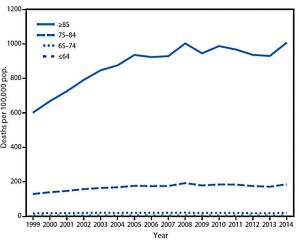
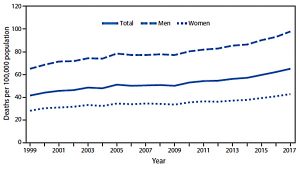
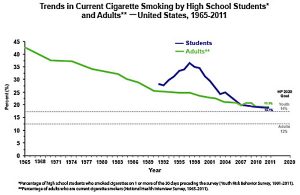
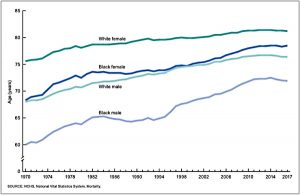



 The corona effect: spiky, crown-like cells develop and eventually become pathogenic.
The corona effect: spiky, crown-like cells develop and eventually become pathogenic.





